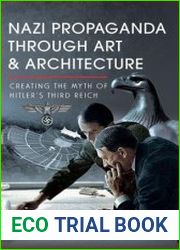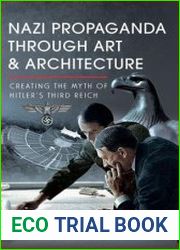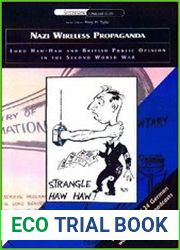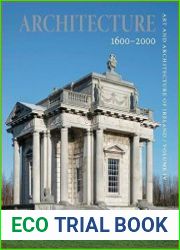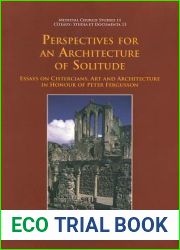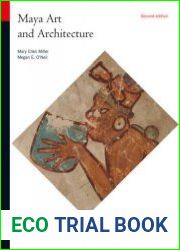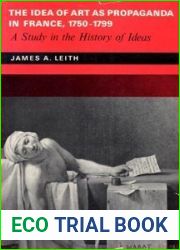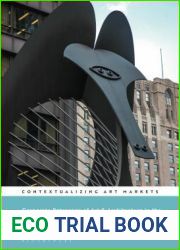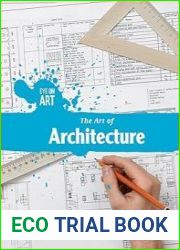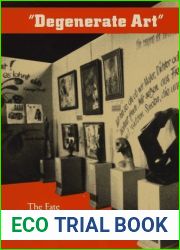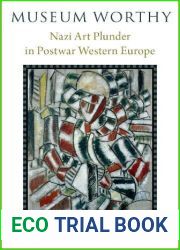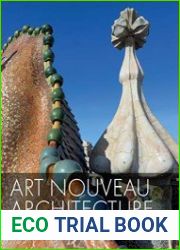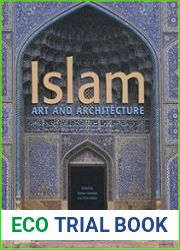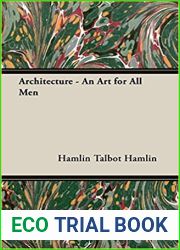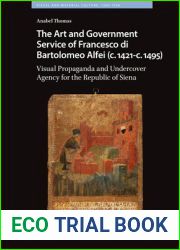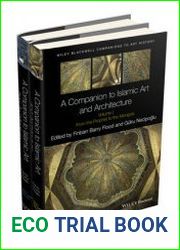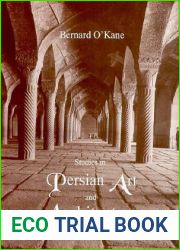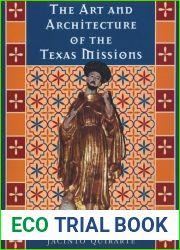
BOOKS - Nazi Propaganda Through Art and Architecture Creating the Myth of Hitler's Th...

Nazi Propaganda Through Art and Architecture Creating the Myth of Hitler's Third Reich
Author: Norman Ridley
Year: 2024
Pages: 202
Format: PDF
File size: 10,4 МБ
Language: ENG

Year: 2024
Pages: 202
Format: PDF
File size: 10,4 МБ
Language: ENG

Nazi Propaganda Through Art and Architecture Creating the Myth of Hitler's Third Reich The rise of the Nazi party in Germany in 1933 marked the beginning of a new era in the country's history, as the regime embarked on a mission to transform the nation into a totalitarian state. However, simply imposing their authority was not enough; the Nazis knew that they needed to win the hearts and minds of the people to achieve their goals. To do this, they employed a powerful tool - propaganda through art and architecture. This book explores how the Nazis used these mediums to create an idealized vision of German nationhood, one that would make every citizen feel proud and included. The Nazis understood that art and architecture had the power to shape public opinion and influence the way people thought about themselves and their place in society. They used this knowledge to create a mythical narrative of Hitler's Third Reich, one that would resonate with the masses and justify their policies. The regime's leaders believed that by creating a sense of shared identity and purpose, they could rally the population behind their cause and maintain control over the country. Through a careful analysis of the art and architecture of the time, this book reveals how the Nazis crafted a vision of German greatness that was both alluring and terrifying. From the grandiose buildings and monuments to the subtle yet insidious messages embedded in everyday art, the Nazis sought to create a world that was both beautiful and oppressive. They wanted to create a sense of unity among the people, but at the same time, they were willing to sacrifice individual freedoms and rights for the greater good of the nation.
Нацистская пропаганда через искусство и архитектуру создает миф о Третьем рейхе Гитлера Подъем нацистской партии в Германии в 1933 году ознаменовал начало новой эры в истории страны, когда режим приступил к миссии по превращению нации в тоталитарное государство. Однако простого навязывания своих полномочий было недостаточно; нацисты знали, что для достижения своих целей им необходимо завоевать сердца и умы народа. Для этого они задействовали мощный инструмент - пропаганду через искусство и архитектуру. В этой книге рассказывается о том, как нацисты использовали эти средства для создания идеализированного видения немецкой государственности, которое заставило бы каждого гражданина чувствовать гордость и вовлеченность. Нацисты понимали, что искусство и архитектура способны формировать общественное мнение и влиять на то, как люди думают о себе и своем месте в обществе. Они использовали эти знания, чтобы создать мифическое повествование о Третьем рейхе Гитлера, которое резонировало бы с массами и оправдывало их политику. Лидеры режима считали, что, создавая чувство общей идентичности и цели, они могли бы сплотить население за своим делом и сохранить контроль над страной. Благодаря тщательному анализу искусства и архитектуры того времени, эта книга показывает, как нацисты создали видение немецкого величия, которое было одновременно манящим и ужасающим. От грандиозных зданий и памятников до тонких, но коварных посланий, заложенных в повседневном искусстве, нацисты стремились создать мир, который был бы одновременно красивым и деспотичным. Они хотели создать в народе чувство единства, но в то же время были готовы пожертвовать индивидуальными свободами и правами ради большего блага нации.
La propagande nazie à travers l'art et l'architecture crée le mythe du Troisième Reich d'Hitler L'ascension du parti nazi en Allemagne en 1933 a marqué le début d'une nouvelle ère dans l'histoire du pays, lorsque le régime s'est engagé dans une mission visant à faire de la nation un État totalitaire. Cependant, la simple imposition de ses pouvoirs ne suffisait pas ; les nazis savaient que pour atteindre leurs objectifs, ils devaient gagner le cœur et l'esprit du peuple. Pour ce faire, ils ont utilisé un outil puissant - la propagande à travers l'art et l'architecture. Ce livre raconte comment les nazis ont utilisé ces moyens pour créer une vision idéalisée de l'État allemand qui ferait sentir la fierté et l'engagement de chaque citoyen. s nazis ont compris que l'art et l'architecture peuvent façonner l'opinion publique et influencer la façon dont les gens pensent eux-mêmes et leur place dans la société. Ils ont utilisé ces connaissances pour créer un récit mythique du Troisième Reich d'Hitler qui résonnerait avec les masses et justifierait leur politique. s dirigeants du régime pensaient qu'en créant un sentiment d'identité et de but communs, ils pouvaient rassembler la population derrière leur cause et garder le contrôle du pays. Grâce à une analyse minutieuse de l'art et de l'architecture de l'époque, ce livre montre comment les nazis ont créé une vision de la grandeur allemande à la fois séduisante et terrifiante. Des grands bâtiments et monuments aux messages subtils mais insidieux posés dans l'art quotidien, les nazis cherchaient à créer un monde à la fois beau et despotique. Ils voulaient créer un sentiment d'unité dans le peuple, mais en même temps ils étaient prêts à sacrifier les libertés et les droits individuels pour le bien de la nation.
La propaganda nazi a través del arte y la arquitectura crea el mito del Tercer Reich de Hitler ascenso del partido nazi en Alemania en 1933 marcó el inicio de una nueva era en la historia del país, cuando el régimen emprendió la misión de convertir a la nación en un estado totalitario. n embargo, la simple imposición de sus poderes no fue suficiente; los nazis sabían que para lograr sus objetivos necesitaban conquistar los corazones y las mentes del pueblo. Para ello, emplearon una poderosa herramienta, la propaganda a través del arte y la arquitectura. Este libro narra cómo los nazis utilizaron estos medios para crear una visión idealizada de la estadidad alemana que haría sentir orgullo e implicación a cada ciudadano. nazis entendieron que el arte y la arquitectura eran capaces de moldear la opinión pública e influir en la forma en que la gente piensa en sí misma y en su lugar en la sociedad. Utilizaron este conocimiento para crear una narrativa mítica sobre el Tercer Reich de Hitler que resonaría con las masas y justificaría sus políticas. líderes del régimen creían que al crear un sentido de identidad y propósito común, podían reunir a la población detrás de sus asuntos y mantener el control del país. A través de un cuidadoso análisis del arte y la arquitectura de la época, este libro muestra cómo los nazis crearon una visión de la grandeza alemana que era a la vez fascinante y terrorífica. Desde grandes edificios y monumentos hasta sutiles pero insidiosos mensajes incrustados en el arte cotidiano, los nazis buscaban crear un mundo que fuera a la vez hermoso y despótico. Querían crear un sentido de unidad en la gente, pero al mismo tiempo estaban dispuestos a sacrificar libertades y derechos individuales por el bien mayor de la nación.
La propaganda nazista attraverso l'arte e l'architettura crea il mito del Terzo Reich di Hitler L'ascesa del partito nazista in Germania nel 1933 segnò l'inizio di una nuova era nella storia del paese, quando il regime iniziò la missione di trasformare la nazione in uno stato totalitario. Ma la semplice imposizione dei propri poteri non era sufficiente; i nazisti sapevano che per raggiungere i loro obiettivi avevano bisogno di conquistare i cuori e le menti del popolo. Per questo hanno utilizzato un potente strumento: la propaganda attraverso l'arte e l'architettura. Questo libro descrive come i nazisti hanno usato questi strumenti per creare una visione idealizzata dello stato tedesco che faccia sentire ogni cittadino orgoglioso e coinvolto. I nazisti sapevano che l'arte e l'architettura erano in grado di formare l'opinione pubblica e influenzare il modo in cui le persone pensavano di sé e del loro posto nella società. Hanno usato queste conoscenze per creare una narrazione mitologica del Terzo Reich di Hitler, che risulterebbe con le masse e giustificherebbe la loro politica. I leader del regime ritenevano che, creando un senso di identità e di scopo comune, avrebbero potuto unire la popolazione dietro la propria causa e mantenere il controllo del paese. Attraverso un'attenta analisi dell'arte e dell'architettura dell'epoca, questo libro mostra come i nazisti crearono una visione della grandezza tedesca che era allo stesso tempo macabra e orribile. Da grandi edifici e monumenti a sottili ma insidiosi messaggi di arte quotidiana, i nazisti cercavano di creare un mondo che fosse allo stesso tempo bello e dispotico. Volevano creare un senso di unità nel popolo, ma allo stesso tempo erano disposti a sacrificare le libertà individuali e i diritti per il bene più grande della nazione.
NS-Propaganda durch Kunst und Architektur schafft Mythos von Hitlers Drittem Reich Der Aufstieg der NSDAP in Deutschland 1933 markierte den Beginn einer neuen Ära in der Geschichte des Landes, als das Regime die Mission antrat, die Nation in einen totalitären Staat zu verwandeln. Die bloße Durchsetzung ihrer Befugnisse reichte jedoch nicht aus; Die Nazis wussten, dass sie, um ihre Ziele zu erreichen, die Herzen und Köpfe des Volkes gewinnen mussten. Dazu setzten sie ein mächtiges Instrument ein - Propaganda durch Kunst und Architektur. Dieses Buch erzählt, wie die Nazis diese Mittel nutzten, um eine idealisierte Vision der deutschen Staatlichkeit zu schaffen, die jeden Bürger stolz und engagiert fühlen lassen würde. Die Nazis verstanden, dass Kunst und Architektur in der Lage sind, die öffentliche Meinung zu formen und die Art und Weise zu beeinflussen, wie Menschen über sich selbst und ihren Platz in der Gesellschaft denken. e nutzten dieses Wissen, um eine mythische Erzählung über Hitlers Drittes Reich zu schaffen, die bei den Massen Anklang fand und ihre Politik rechtfertigte. Die Führer des Regimes glaubten, dass sie durch die Schaffung eines Gefühls gemeinsamer Identität und eines gemeinsamen Ziels die Bevölkerung hinter ihrer Sache versammeln und die Kontrolle über das Land behalten könnten. Durch eine sorgfältige Analyse der Kunst und Architektur der Zeit zeigt dieses Buch, wie die Nazis eine Vision deutscher Größe schufen, die sowohl verführerisch als auch erschreckend war. Von grandiosen Gebäuden und Denkmälern bis hin zu subtilen, aber heimtückischen Botschaften, die in die alltägliche Kunst eingebettet waren, versuchten die Nazis, eine Welt zu schaffen, die sowohl schön als auch unterdrückerisch war. e wollten ein Gefühl der Einheit im Volk schaffen, waren aber gleichzeitig bereit, individuelle Freiheiten und Rechte für das größere Wohl der Nation zu opfern.
nazistowska propaganda poprzez sztukę i architekturę tworzy mit III Rzeszy Hitlerowskiej Powstanie nazistowskiej partii w Niemczech w 1933 zapoczątkowało nową erę w historii kraju, kiedy reżim rozpoczął misję przekształcenia narodu w państwo totalitarne. Jednak po prostu narzucenie ich mocy nie wystarczyło; Naziści wiedzieli, że aby osiągnąć swoje cele, muszą zdobyć serca i umysły ludu. W tym celu posłużyli się potężnym narzędziem - propagandą poprzez sztukę i architekturę. Ta książka kronika jak naziści wykorzystali te środki do stworzenia wyidealizowanej wizji niemieckiej państwowości, która sprawiłaby, że każdy obywatel czuł się dumny i zaangażowany. Naziści rozumieli, że sztuka i architektura są w stanie kształtować opinię publiczną i wpływać na sposób myślenia o sobie i ich miejsce w społeczeństwie. Wykorzystali tę wiedzę do stworzenia mitycznej opowieści o III Rzeszy Hitlera, która by rezonowała masami i usprawiedliwiała ich politykę. Przywódcy reżimu wierzyli, że dzięki stworzeniu poczucia wspólnej tożsamości i celu mogą zgromadzić ludność za swoją sprawą i zachować kontrolę nad krajem. Dzięki dokładnej analizie ówczesnej sztuki i architektury książka ta pokazuje, jak naziści stworzyli wizję niemieckiej wielkości, która była zarówno urzekająca, jak i przerażająca. Od wspaniałych budynków i zabytków po subtelne, ale podstępne przesłania osadzone w sztuce codziennego użytku, naziści dążyli do stworzenia świata, który był zarówno piękny, jak i uciskający. Chcieli stworzyć poczucie jedności wśród ludzi, ale jednocześnie byli gotowi poświęcić indywidualne wolności i prawa dla większego dobra narodu.
''
Sanat ve mimarlık yoluyla Nazi propagandası, Hitler'in Üçüncü Reich efsanesini yaratıyor 1933'de Almanya'daki Nazi Partisi'nin yükselişi, rejimin ulusu totaliter bir devlete dönüştürme misyonuna başladığı ülke tarihinde yeni bir dönemin başlangıcını işaret etti. Ancak, sadece güçlerini empoze etmek yeterli değildi; Naziler amaçlarına ulaşmak için insanların kalplerini ve zihinlerini kazanmaları gerektiğini biliyorlardı. Bunu yapmak için güçlü bir araç kullandılar - sanat ve mimarlık yoluyla propaganda. Bu kitap, Nazilerin bu araçları, her vatandaşı gururlu ve meşgul hissettirecek idealize edilmiş bir Alman devleti vizyonu oluşturmak için nasıl kullandıklarını anlatıyor. Naziler, sanat ve mimarinin kamuoyunu şekillendirme ve insanların kendileri ve toplumdaki yerleri hakkında nasıl düşündüklerini etkileme yeteneğine sahip olduğunu anladılar. Bu bilgiyi, Hitler'in Üçüncü Reich'ının kitlelerle rezonansa girecek ve politikalarını haklı çıkaracak efsanevi bir anlatı oluşturmak için kullandılar. Rejimin liderleri, ortak bir kimlik ve amaç duygusu yaratarak, halkı davalarının arkasında toplayabileceklerine ve ülkenin kontrolünü ellerinde tutabileceklerine inanıyorlardı. Zamanın sanat ve mimarisinin dikkatli bir şekilde analiz edilmesiyle, bu kitap Nazilerin hem çekici hem de korkutucu bir Alman büyüklüğü vizyonunu nasıl yarattığını gösteriyor. Görkemli binalar ve anıtlardan günlük sanata gömülü ince ama sinsi mesajlara kadar, Naziler hem güzel hem de baskıcı bir dünya yaratmaya çalıştılar. İnsanlar arasında bir birlik duygusu yaratmak istediler, ancak aynı zamanda bireysel özgürlükleri ve hakları ulusun iyiliği için feda etmeye hazırdılar.
الدعاية النازية من خلال الفن والعمارة تخلق أسطورة الرايخ الثالث لهتلر كان صعود الحزب النازي في ألمانيا في عام 1933 بمثابة بداية حقبة جديدة في تاريخ البلاد، عندما شرع النظام في مهمة لتحويل الأمة إلى دولة شمولية. غير أن مجرد فرض سلطاتها لا يكفي ؛ عرف النازيون أنهم بحاجة لتحقيق أهدافهم لكسب قلوب وعقول الناس. للقيام بذلك، استخدموا أداة قوية - الدعاية من خلال الفن والعمارة. يروي هذا الكتاب كيف استخدم النازيون هذه الوسائل لخلق رؤية مثالية للدولة الألمانية من شأنها أن تجعل كل مواطن يشعر بالفخر والانخراط. أدرك النازيون أن الفن والعمارة قادران على تشكيل الرأي العام والتأثير على طريقة تفكير الناس في أنفسهم ومكانتهم في المجتمع. لقد استخدموا هذه المعرفة لإنشاء رواية أسطورية عن الرايخ الثالث لهتلر والتي من شأنها أن تلقى صدى لدى الجماهير وتبرر سياساتهم. اعتقد قادة النظام أنه من خلال خلق شعور بالهوية المشتركة والهدف، يمكنهم حشد السكان وراء قضيتهم والاحتفاظ بالسيطرة على البلاد. من خلال التحليل الدقيق للفن والهندسة المعمارية في ذلك الوقت، يوضح هذا الكتاب كيف ابتكر النازيون رؤية للعظمة الألمانية كانت مغرية ومرعبة. من المباني والآثار الفخمة إلى الرسائل الخفية ولكن الخبيثة المتضمنة في الفن اليومي، سعى النازيون إلى خلق عالم جميل وقمعي. لقد أرادوا خلق شعور بالوحدة بين الناس، لكنهم في نفس الوقت كانوا مستعدين للتضحية بالحريات والحقوق الفردية من أجل الصالح العام للأمة.







